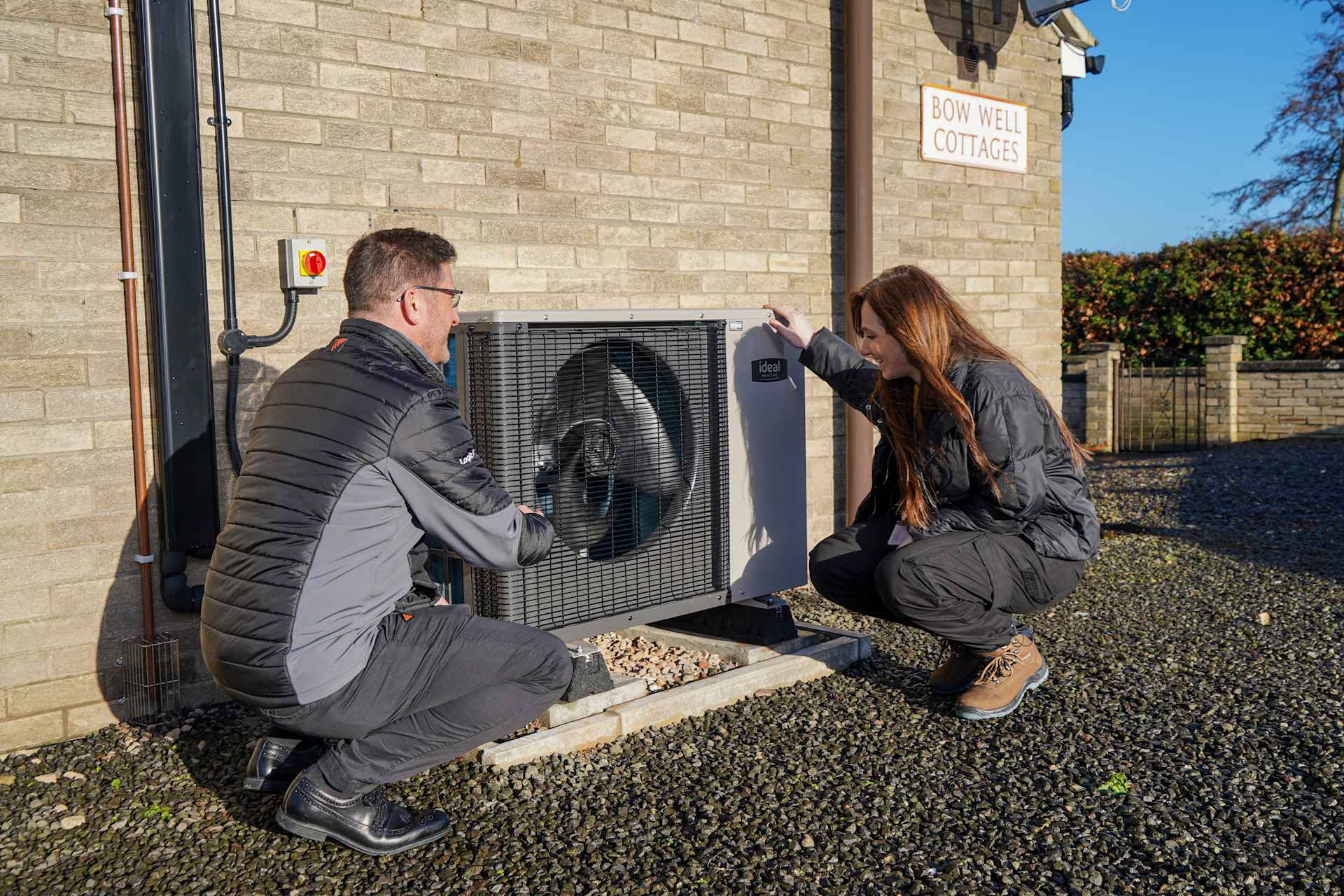
An installer’s guide to prepping for heat pump installation
As an installer, ensuring a successful heat pump installation begins well before the actual fitting process. At Ideal Heating, we understand the importance of a careful preparation phase, whether you are working with monobloc or split systems, and installing in flats or houses. This guide equips you with the essential steps and considerations for a successful installation, rooted in our century-long expertise in British engineering and innovation.
See our Guide to Heat Pumps for Installers for more information.
Understanding the customer's space and needs
Before diving into the technicalities, it's important to assess the specific needs of the customer's property. For both flats and houses, understanding the spatial dynamics and heating requirements is fundamental.
Begin by evaluating the size of the space that needs heating and any potential installation restrictions. This initial assessment will guide the choice between a monobloc and split system, and aid in preventing common heat pump problems down the line.
Monobloc vs. split heat pumps
Air source heat pumps come in two distinct types, and it’s important to assess the property and the client’s needs to decide which is best.
Monobloc Systems: These systems house all components in a single outdoor unit, making them generally simpler to install. They are ideal for properties with limited indoor space or where minimal disruption is preferred.
Split Systems: These consist of an outdoor and an indoor unit, offering greater flexibility in terms of placement. They are suitable for larger properties where space for an indoor unit is available.
To choose between the two, consider the property's layout, available space, and the customer's preferences. For instance, monobloc systems may be preferable in urban areas or flats, while split systems may be optimal for houses with more extensive grounds and indoor space.
We also have a guide to different types of heat pumps to help you understand these differences further.
Judging when a heat pump is not suitable
While heat pumps are an excellent choice for many properties, there are instances where they may not be the best solution. Consider the following:
Poor Insulation: If a property cannot be effectively insulated, the heat pump's efficiency will be compromised, leading to higher operational costs.
Limited Outdoor Space: For properties with no feasible location for an outdoor unit, an alternative heating solution might be necessary.
High Heating Demands: In some cases, properties with exceptionally high heating demands may require a supplementary heating source or a different system altogether.
Our Installer’s Guide to Energy Efficiency can help you judge the most energy-efficient solution for your installations and learn how to increase their energy efficiency.
Taking measurements
Particularly with split systems, there are a number of measurements to be taken to ensure the installation site is suitable.
Space Requirements for Outdoor Units: Ensure there is adequate clearance around the outdoor unit for both monobloc and split systems. A minimum of 30cm space on all sides is recommended to allow for proper airflow and maintenance access. Additionally, the unit should be placed on a stable, flat surface to prevent vibrations and noise.
Distance Between Indoor and Outdoor Units: For split systems, the ideal distance between the indoor and outdoor units should be kept as short as possible to maximise efficiency and minimise heat loss. Usually, a maximum of 15 metres is recommended, but always refer to the manufacturer's guidelines.
Preparing for installation
Steps for installation in houses
1. Site Survey: Conduct a thorough survey to evaluate the property's suitability, considering factors such as existing pipework, electrical supply, and the condition of the current heating system.
2. Assess Insulation: Ensure the home is adequately insulated. A well-insulated home maximises the efficiency of a heat pump, reducing energy consumption and costs.
3. Outdoor Unit Placement: Choose a location that provides sufficient airflow and easy access for maintenance. Avoid placing it near windows or in enclosed spaces.
4. System Sizing: Determine the correct size of the heat pump based on the home's heating demands. An improperly sized unit can lead to inefficiencies and increased wear.
Steps for installation in flats
Flats pose some slightly different considerations and obstacles than heat pump installations for houses, so bear the following in mind:
1. Space Constraints: Evaluate available space for both indoor and outdoor units. Flats often have limited outdoor space, making unit selection critical.
2. Noise Regulations: Consider noise levels and local regulations, especially in densely populated areas, to ensure compliance and minimise disturbance to neighbours.
3. Shared Services: Take into account any shared utilities or restrictions within the building, which may impact installation.
Tools and equipment checklist
Before starting the installation, ensure you have the necessary tools and equipment. These include:
Pipe cutters and benders
Vacuum pump and manifold gauge set
Refrigerant scales
Electrical tools (multimeter, screwdrivers)
Drill and wall fixings suitable for the unit weight
Additionally, having spare parts such as pipes, insulation, and mountings will help address any unexpected challenges.
Installation considerations for new builds
New builds present unique opportunities for optimising heat pump installations. Since the property is not yet occupied, you have more freedom to plan the most efficient layout for the system. Collaborate with architects and builders to integrate the heat pump into the property's design, ensuring that pipework and electrical connections are optimally placed during construction.
Ensuring peace of mind
At Ideal Heating, we believe that meticulous preparation lays the foundation for a successful heat pump installation. By understanding the customer's needs, choosing the right system, and preparing the site effectively, you can ensure a smooth installation process that reflects our commitment to quality and reliability.
We can give full training on preparing for heat pump installation and all other aspects of heat pumps when you join our Expert Academy.


















